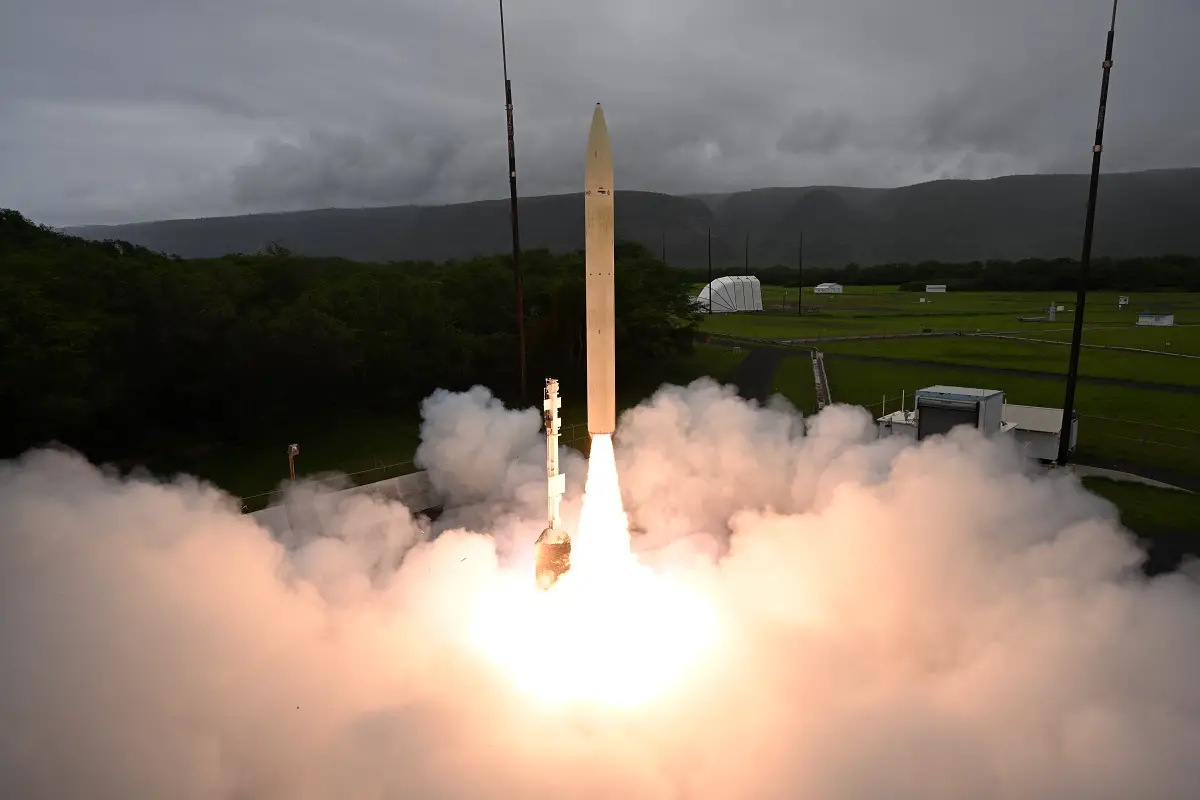The U.S. Navy and U.S. Army recently completed an end-to-end flight test of a hypersonic missile from the Pacific Missile Range Facility, Kauai, HI. The test provided data on the end-to-end performance of the Conventional Prompt Strike and Long Range Hypersonic Weapon All Up Round. The test marks a step forward for the CPS and LRHW programs. Conventional Prompt Strike (CPS) is a hypersonic boost-glide missile development and test program that provides longer range, shorter flight times, and high survivability against enemy defenses. Long Range Hypersonic Weapon (LRHW) will leverage the common hypersonic glide body and introduce a new class of ultrafast and maneuverable long-range missiles with the ability to launch from ground mobile platforms.
“This flight test of the common hypersonic missile marks a milestone for our nation in the development of this capability,” said Vice Adm. Johnny R. Wolfe Jr, Director, Navy’s Strategic Systems Programs, which is the lead designer of the common hypersonic missile.
“Through our joint efforts, we are developing new equipment and adopting new defense concepts that will enable the Army to maintain superiority over any potential adversaries,” said Lt. Gen. Robert Rasch Jr., Director, Army’s Rapid Capabilities and Critical Technologies Office.
Conventional Prompt Strike (CPS) is a United States military effort to develop a system that can deliver a precision-guided conventional weapon strike anywhere in the world within one hour, in a similar manner to a nuclear ICBM. Such a weapon would allow the United States to respond far more swiftly to rapidly emerging threats than is possible with conventional forces. A CPS system could also be useful during a nuclear conflict, potentially replacing the use of nuclear weapons against up to 30% of targets. The CPS program encompasses numerous established and emerging technologies, including conventional surface-launched missiles and air- and submarine-launched hypersonic missiles, although no specific CPS system has yet been finalized as of 2018.
The Long-Range Hypersonic Weapon (LRHW) is a medium-range surface-to-surface hypersonic weapon being developed for use by the United States Army. The United States Navy intends to procure a ship/submarine-launched variant of the missile as part of the service’s Intermediate-Range Conventional Prompt Strike (IRCPS) program. The weapon consists of a large rocket booster that carries the unpowered Common-Hypersonic Glide Body (C-HGB) in a nose cone. Once the booster reaches significant altitude and speed, it releases the C-HGB, which glides at hypersonic speeds as it descends towards its target. Dynetics will build the hypersonic glide vehicle while Lockheed Martin will build the booster as well as assemble the missile and launch equipment.















